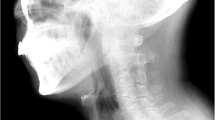Abstract
Stroke is the most common neurological disease in adults that is associated with deglutition disorders. The presence of laryngeal sensitivity is very important in developing safe swallowing without risk of pulmonary complications. The aim of this study was to correlate laryngeal sensitivity with laryngeal penetration and tracheal aspiration after swallows of three food consistencies (puree, thickened liquid, and liquid) in poststroke individuals in the late phase. A cross-sectional clinical study was performed with 91 post-ischemic stroke individuals, with oropharyngeal dysphagia, who were in rehabilitation center treatment from 2009 to 2011. They had a mean age of 68.1 years and average time since injury was 22.6 months; 39 had injury to the right hemisphere and 52 had injury to the left hemisphere. All underwent fiberoptic endoscopic evaluation of swallowing and evaluation of laryngeal sensitivity by touching the tip of the endoscope to the arytenoids and aryepiglottic folds. The linear correlation coefficient of Spearman was applied to evaluate the correlation between laryngeal penetration and tracheal aspiration and the presence/absence of laryngeal sensitivity. There was a negative correlation between the observation of penetration and tracheal aspiration and laryngeal sensitivity, with all bolus consistencies (p < 0.001 for aspiration and p ≤ 0.01 for penetration). The absence of laryngeal sensitivity determines the more frequent findings of penetration and tracheal aspiration. This sensory stimulus in the mucosa of the pharynx and larynx is an essential element for safe swallowing and its deficiency associated with altered motor activity can cause laryngeal penetration and aspiration in poststroke individuals regardless of food consistency.


Similar content being viewed by others
References
Terré R, Mearin F. Oropharyngeal dysphagia after the acute phase of stroke: predictors of aspiration. Neurogastroenterol Motil. 2006;18:200–5.
Martino R, Foley N, Bhogal S, Diamant N, Speechley M, Teasell R. Dysphagia after stroke. Incidence, diagnosis, and pulmonary complications. Stroke. 2005;36:2756–63.
Martino R, Martin RE, Black S. Dysphagia after stroke and its management. CMAJ. 2012;184(10):1127–8.
Schelp AO, Cola PC, Gatto AR, Silva RG, Carvalho LR. Incidência de disfagia orofaríngea após acidente vascular encefálico em hospital público de referência. Arq Neuropsiquiatr. 2004;62(2-B):503–6.
Daniels SK, Schroeder MF, DeGeorge PC, Corey DM, Foundas AL, Rosenbek JC. Defining and measuring dysphagia following stroke. Am J Speech Lang Pathol. 2009;18:74–81.
Smithard DG, O’Neill PA, England RE, Park CL, Wyatt R, Martin DF, Morris J. The natural history of dysphagia following a stroke. Dysphagia. 1997;12:188–93.
Mann G, Dip PG, Hankey GJ, Cameron D. Swallowing function after stroke. Prognosis and prognostic factors at 6 months. Stroke. 1999;30:744–8.
Bours GJ, Speyer R, Lemmens J, Limburg M, Wit R. Bedside screening test vs. videofluoroscopy or fiberoptic endoscopic evaluation of swallowing to detect dysphagia in patients with neurological disorders: systematic review. J Adv Nurs. 2009;65(3):477–93.
Martino R, Pron G, Diamant NE. Screening for oropharyngeal dysphagia in stroke patients: insufficient evidence for guidelines. Dysphagia. 2000;15:19–30.
Sulica L, Hembree A, Blitzer A. Swallowing and sensation: evaluation of deglutition in the anesthetized larynx. Ann Otol Rhinol Laryngol. 2002;111:291–4.
Aviv JE, Kim T, Sacco RL, Kaplan S, Goodhart K, Diamond B, Close LG. FEESST: a new bedside endoscopic test of the motor and sensory components of swallowing. Ann Otol Rhinol Laryngol. 1998;107:378–87.
Aviv JE, Spitzer J, Cohen M, Ma G, Belafsky P, Close LG. Laryngeal adductor reflex and pharyngeal squeeze as predictors of laryngeal penetration and aspiration. Laryngoscope. 2002;112:338–41.
Aviv JE, Martin JH, Sacco RL, Zagar D, Diamond B, Keen MS, Blitzer A. Supraglottic and pharyngeal sensory abnormalities in stroke patients with dysphagia. Ann Otol Rhinol Laryngol. 1996;105:92v7.
Langmore SE, Schatz K, Olsen N. Fiberoptic endoscopic examination of swallowing safety: a new procedure. Dysphagia. 1988;2:216–9.
Rosenbeck JC, Robbins JA, Roecker EB, Coyle JL, Wood JL. A penetration–aspiration scale. Dysphagia. 1996;11:93–8.
Steele C, Miller AJ. Sensory input pathways and mechanisms in swallowing: a review. Dysphagia. 2010;25:323–33.
Bass NH, Bass NH. The neurology of swallowing. In: Groher ME, editor. Dysphagia: diagnosis and management. 3rd ed. London: Butterworth-Heinemann; 1997. p. 7–35.
Teismann IK, Steinstraeter O, Stoeckigt K, Suntrup S, Wollbrink A, Pantev C, Dziewas R. Functional oropharyngeal sensory disruption interferes with the cortical control of swallowing. BCM Neurosci. 2007;8:62.
Dziewas R, Warnecke T, Ölenberg S, Teismann I, Zimmermann J, Krämer C, Ritter M, Ringelstein EB, Schäbitz WR. Towards a basic endoscopic assessment of swallowing in acute stroke—development and evaluation of a simple dysphagia score. Cerebrovasc Dis. 2008;26:41–7.
Clavé P, Kraa M, Arreola V, Girvent M, Farré R, Palomera E, Serra-Prat M. The effect of bolus viscosity on swallowing function in neurogenic dysphagia. Aliment Pharmacol Ther. 2006;24:1385–94.
Dantas RO. Penetração/Aspiração: Fisiopatologia e Terapêutica. In: Costa MMB, Castro LP, editors. Tópicos em Deglutição e Disfagia. Rio de Janeiro: Guanabara Koogan; 2003. p. 175–8.
Conflict of interest
The authors have no conflict of interest to declare.
Author information
Authors and Affiliations
Corresponding author
Rights and permissions
About this article
Cite this article
Onofri, S.M.M., Cola, P.C., Berti, L.C. et al. Correlation Between Laryngeal Sensitivity and Penetration/Aspiration After Stroke. Dysphagia 29, 256–261 (2014). https://doi.org/10.1007/s00455-013-9504-7
Received:
Accepted:
Published:
Issue Date:
DOI: https://doi.org/10.1007/s00455-013-9504-7




